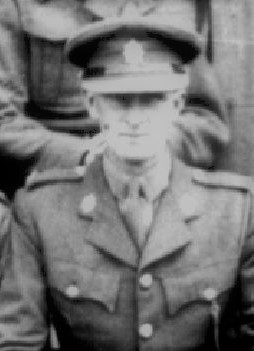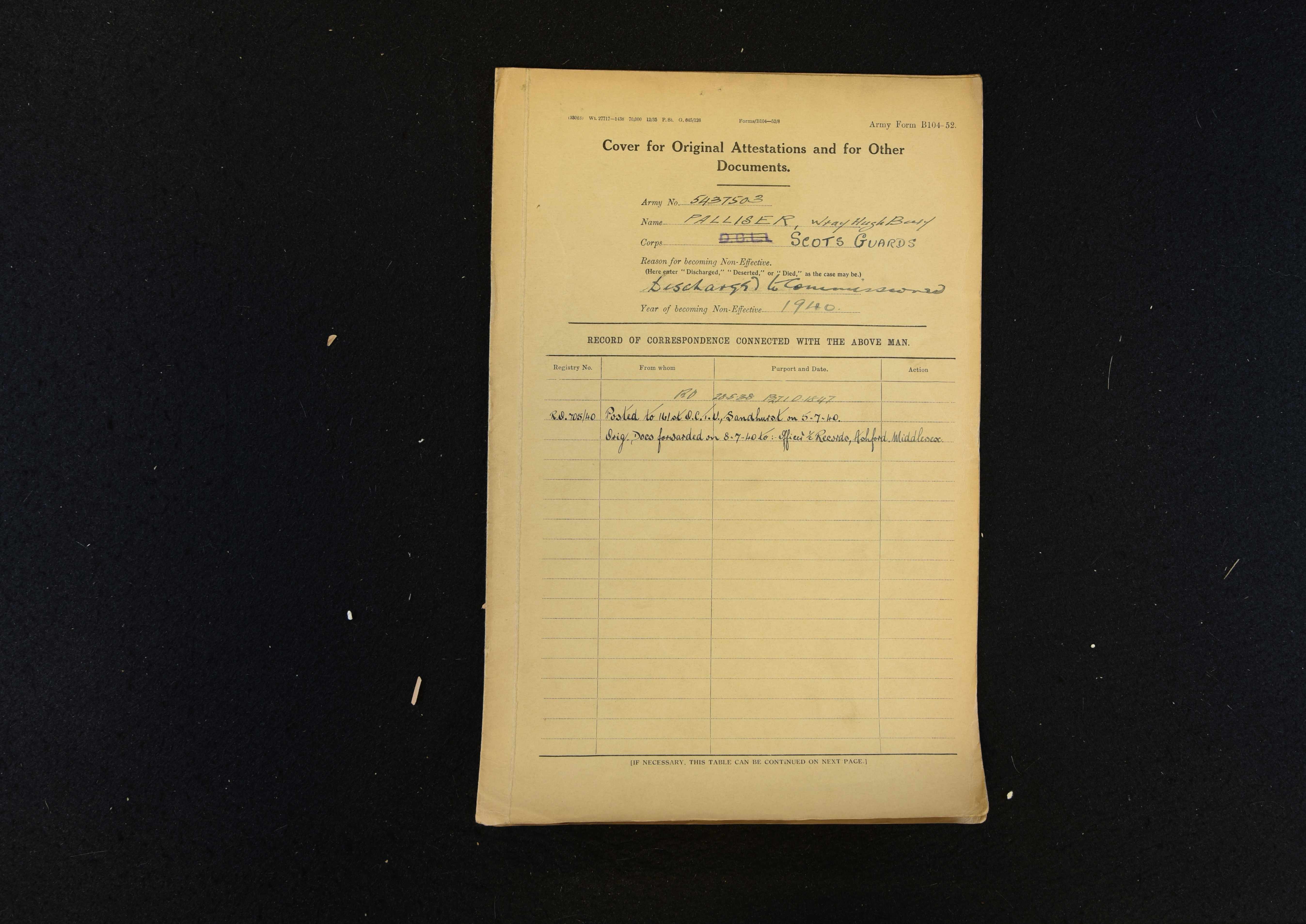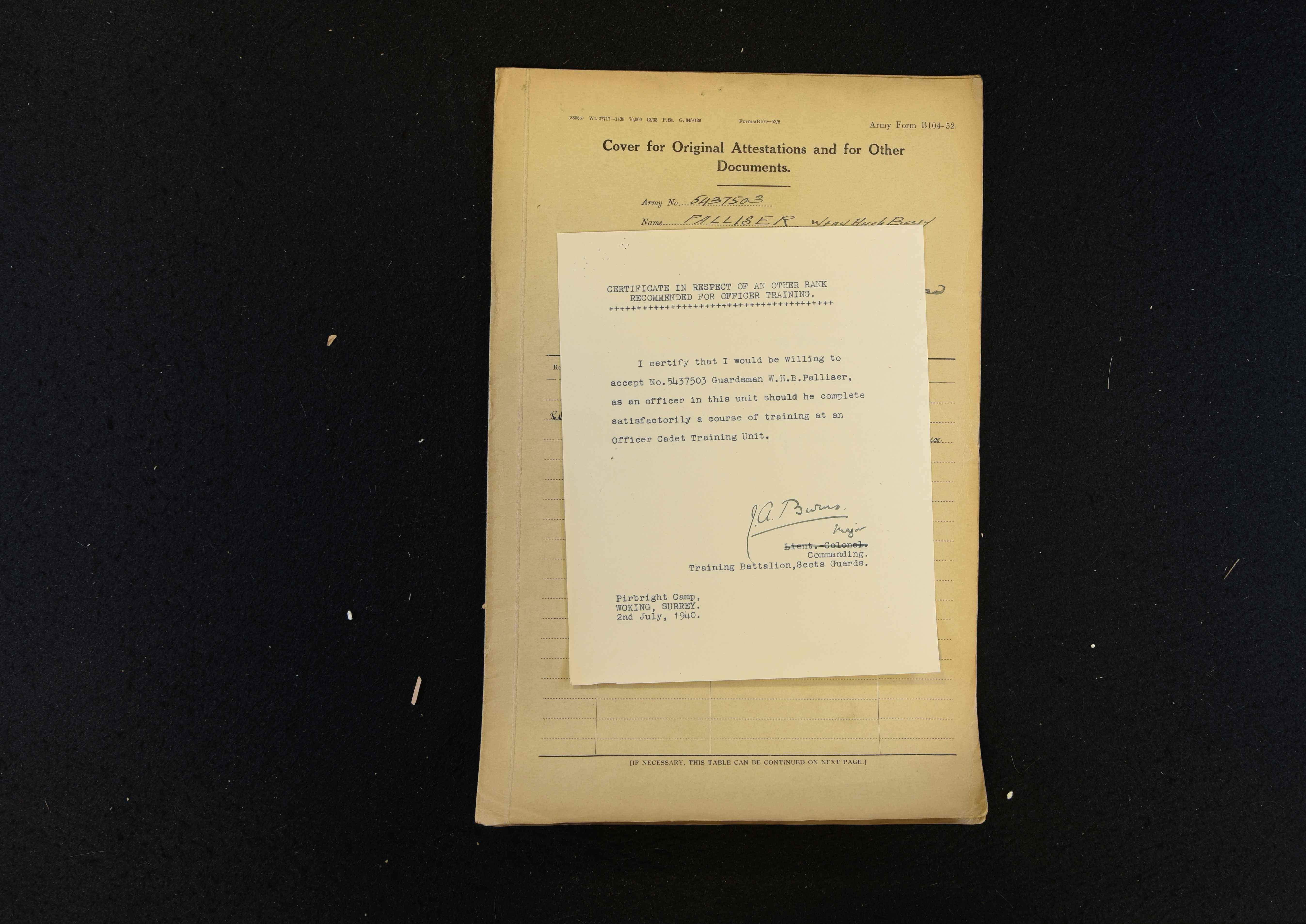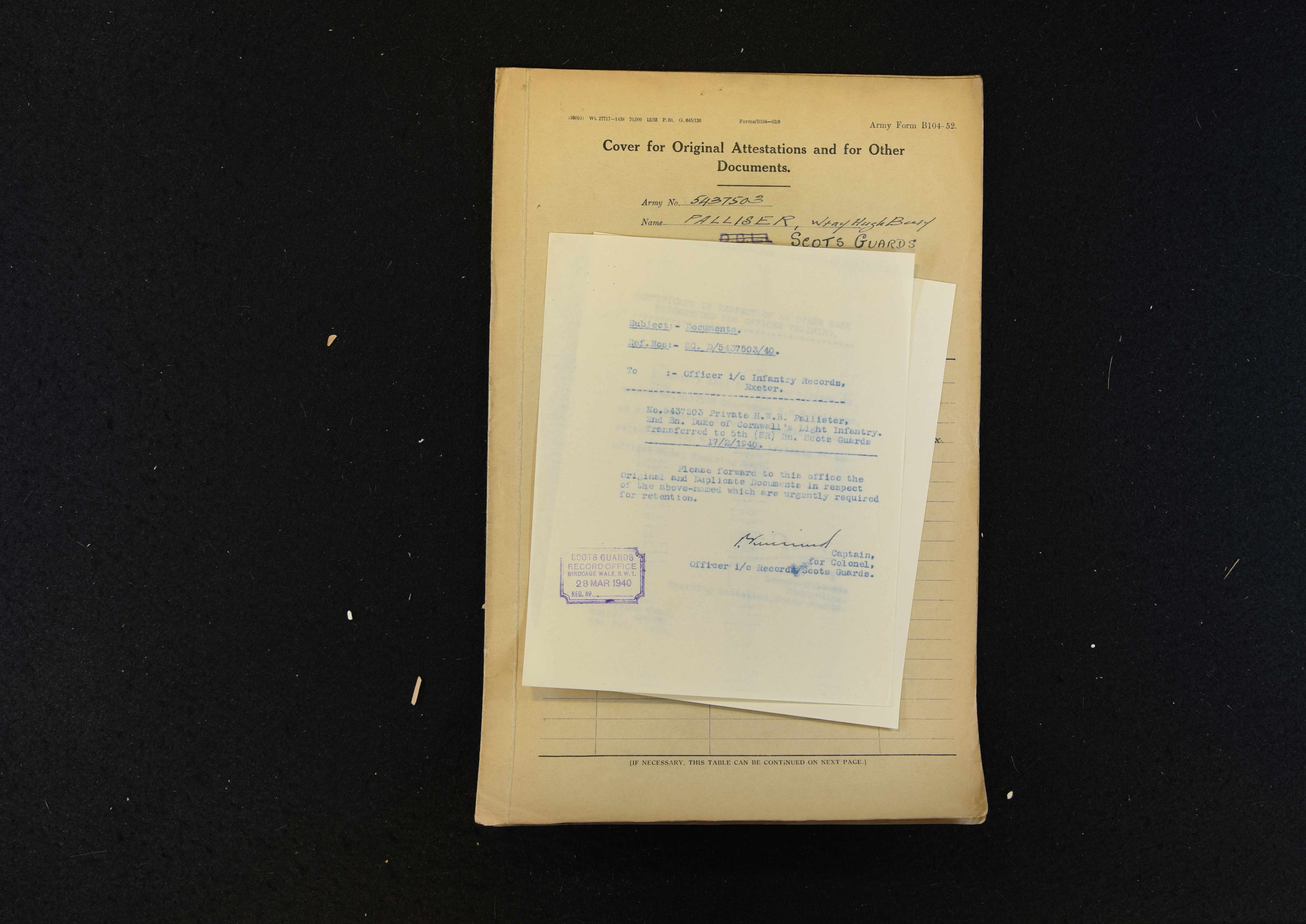Born in Looe, Cornwall to medical student Wray and his South African born wife Iris, in 1921 they are living in St Pancras, London. Hugh Palliser had run away from school to fight in the Spanish Civil War. He joined the ranks of the Duke of Cornwall’s Light Infantry in 1938. On 4 Sep 1939 he married Phyllis Hartley Duff, receiving a special dispensation as his unit was mobilised for immediate overseas service. Subsequently he volunteered for the 5th Battalion Scots Guard, a special ski battalion trained for service in Finland in early 1940. It was comprised of men with skiing experience and Hugh’s previous ski medals meant he was accepted. After training in the French Alps, in March 1940 they embarked in Scotland, only for their departure to be cancelled before the ship left port. Many of the men involved went on to other Special Forces, with some others also joining Auxiliary Units. His service with the 5th Scots Guards meant he avoided the evacuation from Dunkirk of his original Battalion.
He was commissioned into the Devon Regiment on 26th October 1940. Men were normally commissioned into a different regiment to that which they had already served.
He joined Auxiliary Units as a Scout Section Officer in late 1940, most likely November. His Intelligence Officer (IO), Captain Stuart Edmundson described him as "a splendid young man, very wild", but that "when you kept him under control, he was a good officer and suitable for the work".
On 10 Feb 1941 he transferred to the Royal Engineers, the same regiment as his IO. He remained as Scout Section Officer after with a number of Devon men recalling the Royal Engineers Lieutenant. In April 1941, he visited the Plympton Patrol OB to inspect it, the visit being recorded by Cyril Wellington in his diary.
His daughter was born in mid 1942 in the Tavistock district of Devon.
He apparently undertook a commando course, learnt to parachute and had training in hand to hand fighting while with Auxiliary Units. He had been a boxer at school before the war and apparently continued in the Army.
Captain Edmundson indicates that he returned to his regiment and was replaced by Lieutenant Bradford. In June 1942 he was sent to Kenya where he remained until the end of the war. He built roads and railways and trained local troops, travelling across East Africa. He qualified as a Swahili interpreter, which meant more pay! He is recorded as Specially employed under the Devon Regiment as late as 4th quarter 1943 in the Army List. On 21 Jan 1943 he was promoted Temporary Captain and was still listed as specially employed.
After the war he remained listed as a Royal Engineers Officer. He resigned his commission on Boxing Day 1948, preferring this to being posted away from his family in Malaya. The family had moved to Jamaica where his wife had family and lived there until he died.
| Unit or location | Role | Posted from | until |
|---|---|---|---|
| Devon Scout Section | Scout Section Commander | 1940 | 1942 |
Soldier
Private HWB Palliser 5437503
17 Feb 1940 Transferred from 2nd Battalion Duke of Cornwall's Light Infantry to 5th Battalion Scots Guards
5 Jul 1940 Posted to 161 Officer Cadet Training Unit, Sandhurst
Stuart Edmundson, personal account held by BROM
The Army List
http://boards.ancestry.ca/thread.aspx?mv=flat&m=9&p=surnames.palliser
www.thegazette.co.uk/London/issue/34990/supplement/6545/data.pdf
www.thegazette.co.uk/London/issue/36956/supplement/1115/data.pdf
Scots Guards Enlistment records: FindMyPast



